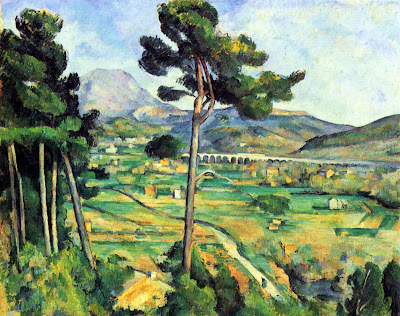Baroque Art: Introduction
Baroque
For the sake of convenience it is customary to define Baroque art as the art of the 17th Century. We know, however, that the Baroque period in the arts started before the year 1600 and extended beyond the end of the century. The Baroque period is, historically, the period of the Counter-Reformation, of the creation of the Absolute Monarchy and the consolidation of the Modern State, the period of the birth of Modern Philosophy with Descartes' rationalism and epistemological subjectivism and with the "tragic" thinking of the "existentialist" Pascal. In France, the philosophy of the 17th Century is called "classical", a designation that, indeed, corresponds to some of the specific forms that the Baroque takes in French culture and in French art in the period.
In the arts, the Baroque style represents both a continuation and a radical transformation of the ideals of the Renaissance. According to W. Friedlander, in the history of art "every period prepares the next". Heinrich Wofflin once observed that the Baroque style can be considered "the style into which the Renaissance resolved itself or into which the Renaissance degenerated". The alternative denotes certainly the dynamic character of the Renaissance itself as a historical period and as an art-historical period. G. Bazin considers the Baroque period as extending itself for two centuries (roughly from 1580 to 1780), between the decline of Roman Mannerism and the beginning of Neo-Classicism, and constituting "one of the most productive periods in European Art." And coinciding with the expansion of European power in the world, Baroque art was exported to different parts of the Globe, from Latin-America to Asia, in the colonial territories of the Spanish and Portuguese empires and Dutch possessions, and was "adopted" and "adapted" in Latin-America to express the world-view and represent the "life-world" of the colonial experience.
"The Baroque or the Modern Age", as defined by the Spanish cultural historian Jose Maravall, was indeed a period of great transformations in European society. The 17th Century is also the century of Newton, the period that laid the foundation for Modern Science and the modern scientific concept of the world. To the complexity of the times, to the tensions accumulated in the experience of radical changes in man's relation to the world and to man, corresponds the complexity of the art forms which cannot be made to conform to a unique or simplified pattern The Baroque style has, therefore, many faces and various aspects which are related by the kinds of experiences they express, rather than by any exclusive identity of formal aspects. The study of the baroque style in fact will translate itself into the study of a historical culture, that is, in the words of Maravall, a historical structure.
The Baroque period in many ways forms the basis of modern culture, and constitutes the soil or foundation of some of the central aspects of modern experience. We will examine the development of Baroque art through the analysis of some of the works of the great European artists of the period, relating the visual arts to music, literature and philosophy, in order to grasp the "logic" of the Baroque experience and its historical-structural determinants.
Marcelo Lima
In the arts, the Baroque style represents both a continuation and a radical transformation of the ideals of the Renaissance. According to W. Friedlander, in the history of art "every period prepares the next". Heinrich Wofflin once observed that the Baroque style can be considered "the style into which the Renaissance resolved itself or into which the Renaissance degenerated". The alternative denotes certainly the dynamic character of the Renaissance itself as a historical period and as an art-historical period. G. Bazin considers the Baroque period as extending itself for two centuries (roughly from 1580 to 1780), between the decline of Roman Mannerism and the beginning of Neo-Classicism, and constituting "one of the most productive periods in European Art." And coinciding with the expansion of European power in the world, Baroque art was exported to different parts of the Globe, from Latin-America to Asia, in the colonial territories of the Spanish and Portuguese empires and Dutch possessions, and was "adopted" and "adapted" in Latin-America to express the world-view and represent the "life-world" of the colonial experience.
"The Baroque or the Modern Age", as defined by the Spanish cultural historian Jose Maravall, was indeed a period of great transformations in European society. The 17th Century is also the century of Newton, the period that laid the foundation for Modern Science and the modern scientific concept of the world. To the complexity of the times, to the tensions accumulated in the experience of radical changes in man's relation to the world and to man, corresponds the complexity of the art forms which cannot be made to conform to a unique or simplified pattern The Baroque style has, therefore, many faces and various aspects which are related by the kinds of experiences they express, rather than by any exclusive identity of formal aspects. The study of the baroque style in fact will translate itself into the study of a historical culture, that is, in the words of Maravall, a historical structure.
The Baroque period in many ways forms the basis of modern culture, and constitutes the soil or foundation of some of the central aspects of modern experience. We will examine the development of Baroque art through the analysis of some of the works of the great European artists of the period, relating the visual arts to music, literature and philosophy, in order to grasp the "logic" of the Baroque experience and its historical-structural determinants.
Marcelo Lima


Comments